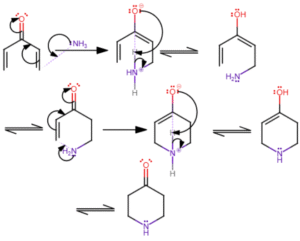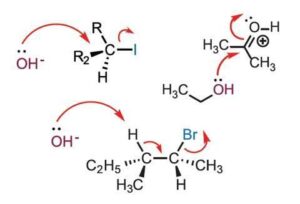Back to: Organic Chemistry 100 Level
Welcome to class!
Hello my chemistry champion! It’s so great to see you again. You’ve been building up such powerful knowledge, and today we’re taking another exciting step forward. We’re going to learn about Reaction Mechanisms I—a topic that will help you understand how and why organic reactions happen the way they do. Don’t worry if it sounds complex right now—we’ll take it step by step, together.
Reaction Mechanisms I
What Is a Reaction Mechanism?
A reaction mechanism is like a step-by-step story of how a chemical reaction takes place. It tells us what happens to each atom and bond during the reaction, and how one substance changes into another.

Think of it like watching a cooking show—before you see the final meal, you see the chef cutting vegetables, adding ingredients, turning on the heat, stirring, and so on. Similarly, in organic chemistry, a reaction mechanism explains each step that leads to the final product.
Why Is This Important?
Understanding reaction mechanisms helps chemists:
Predict what products will form
Control how fast or slow a reaction goes
Create better medicines and useful materials
Key Concepts in Reaction Mechanisms
1. Bond Breaking and Bond Making
In a chemical reaction, bonds between atoms are broken and new bonds are formed. This happens through the movement of electrons.
There are two major ways that bonds can break:
Homolytic cleavage: The bond splits equally, and each atom takes one electron. This forms free radicals.
Heterolytic cleavage: One atom takes both electrons, forming ions (a carbocation or a carbanion).
2. Types of Intermediates in Organic Reactions
During reactions, unstable particles called reaction intermediates are sometimes formed before we get the final product. These include:
Carbocations: Carbon with a positive charge
Carbanions: Carbon with a negative charge
Free radicals: Uncharged but have an unpaired electron
Carbenes: Neutral carbon species with two bonds and a lone pair
Each of these intermediates plays a key role in determining what happens next in the reaction.
3. Types of Arrows Used in Mechanisms
In reaction mechanisms, we use arrows to show how electrons move:
Curved arrow with two heads (↷): Movement of a pair of electrons

Single-headed arrow (∙→): Movement of a single electron (used in free radical reactions)
Real-Life Example You Can Relate To
Let’s say you’re lighting a mosquito coil. As it burns, reactions are happening—bonds breaking and forming in the chemicals. Some of those steps involve free radicals, and if the mechanism is not controlled, it might not work properly or might produce harmful smoke. Understanding those steps helps chemists design safer and more effective products.
Summary
- A reaction mechanism shows the steps in how a reaction happens.
- Bonds can break equally (homolytic) or unequally (heterolytic).
- Important intermediates include carbocations, carbanions, free radicals, and carbenes.
- Arrows show how electrons move in each step of a reaction.
Evaluation
- What is a reaction mechanism?
- What is the difference between homolytic and heterolytic bond breaking?
- Name two types of reaction intermediates.
- What does a curved arrow in a reaction mechanism represent?
- Give a simple example of where you might see free radicals in everyday life.
Well done, superstar! You’re really growing your chemistry mind and becoming more confident every step of the way. Understanding reaction mechanisms is like learning the secret codes behind the scenes—it makes you powerful! Keep showing up, stay curious, and remember that with Afrilearn, your success is unstoppable. See you in the next exciting class!
